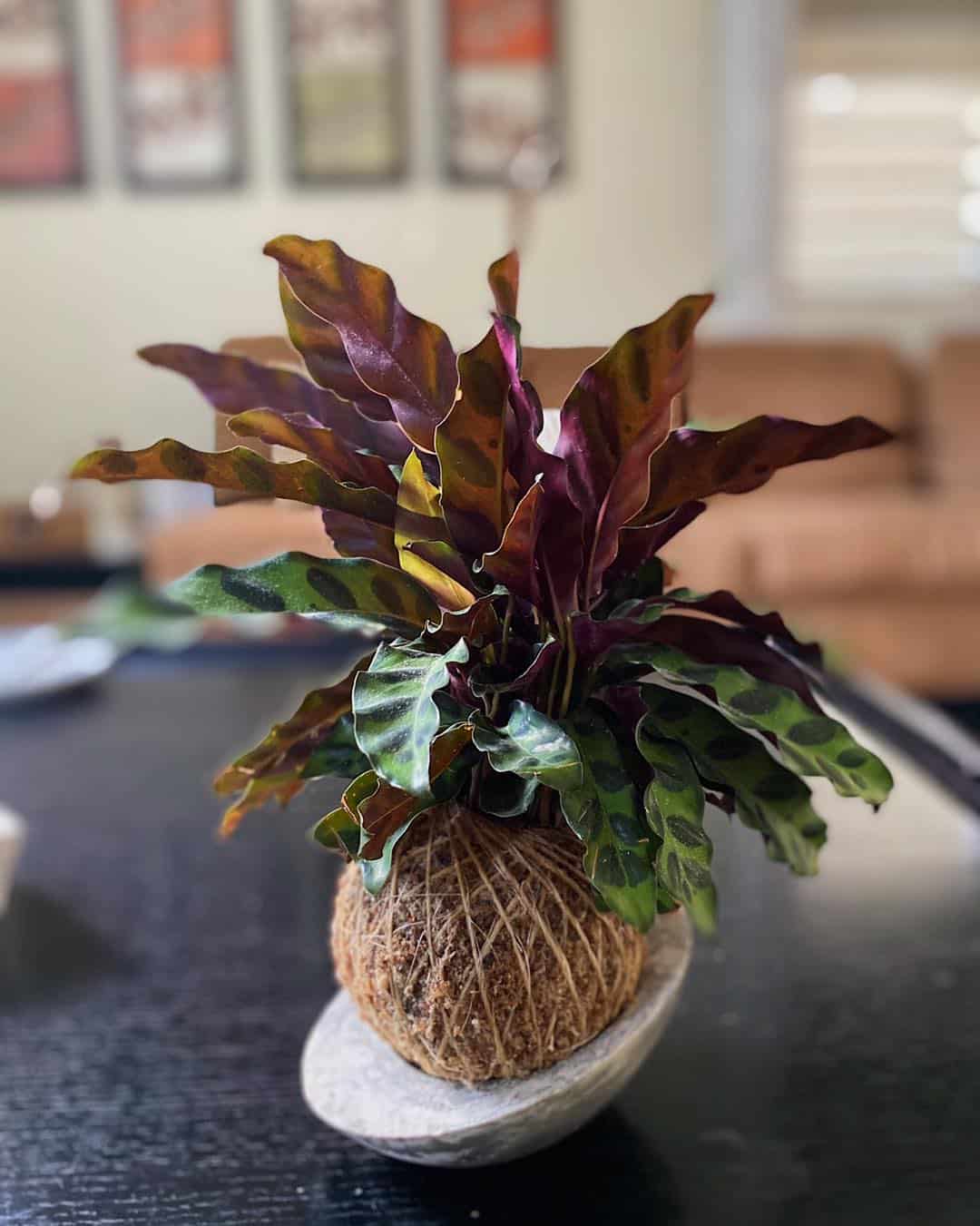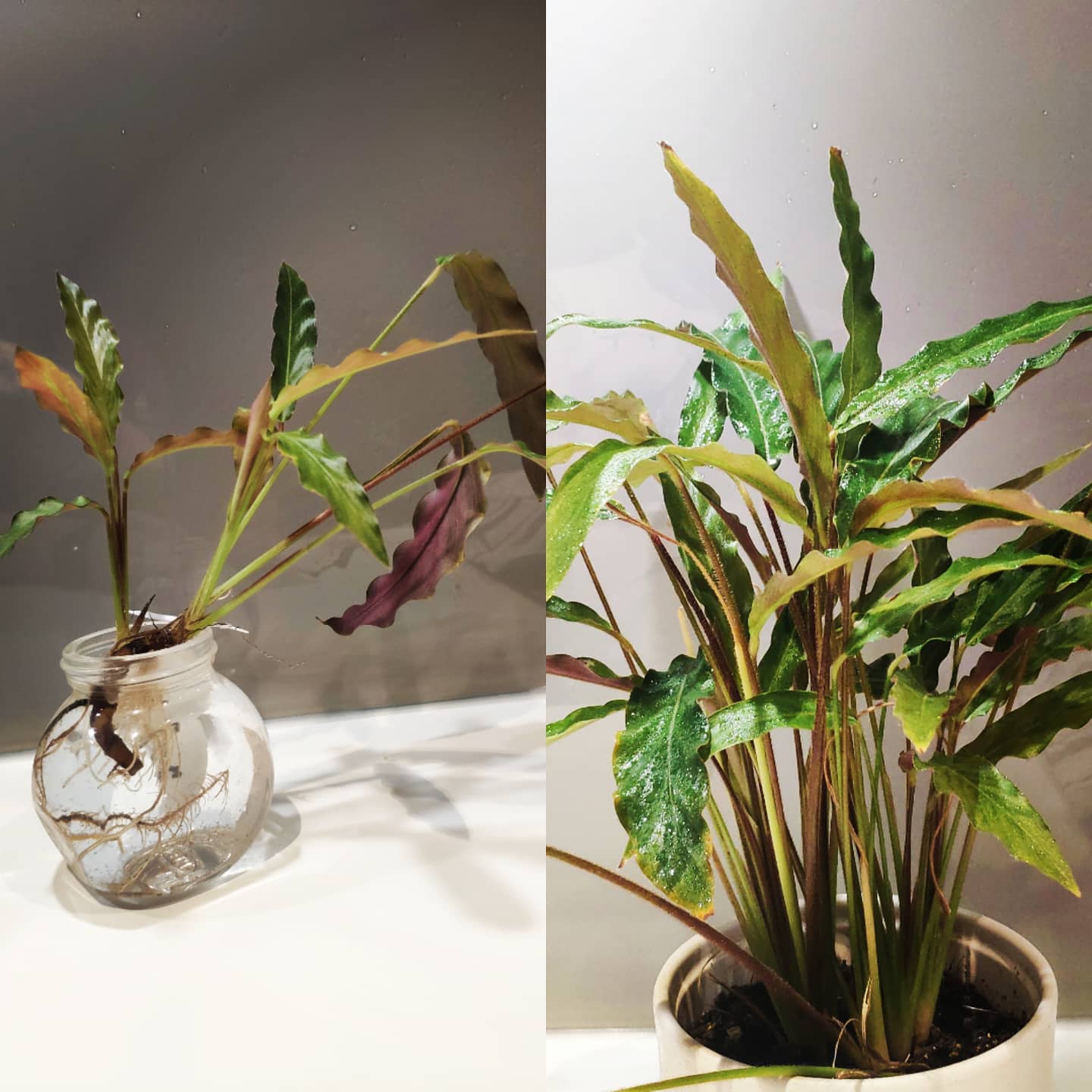Do you think Calathea Rufibarba gets intricately patterned leaves on its own?
Actually, a peculiar care regime propels its fitness to a completely new level.
Before you run to bring Calathea home, an understanding of the care demands is essential.
Table of Contents Show
Calathea Rufibarba [Plant Overview]
Velvet Calathea, or Calathea Rufibarba, prospers in its native tropical habitat of Northeastern Brazilian Rainforests.

Due to the glossy texture, shape, arrangement, and marginally undulated leaves, the plant is also called Furry Feather Calathea.
However, the plant resembles palm trees at a glance but is far related to the true palms.
A brief description of the plant is in the table below.
| Feature(s) | Description(s) |
|---|---|
| Scientific Name | Calathea rufibarba Goeppertia rufibarba |
| Common Name | Velvet Calathea Furry Feather Calathea Rufibarba Prayer Plant |
| Family | Marantaceae |
| USDA Zones | 8 & above |
| Plant Type | Evergreen Perennial Herb |
| Growth Size | Height: 2-3.5 feet Width: 1-2 meters |
| Growing Seasons | Spring to Summer |
| Flowering Season | Late Winter to Early Spring or Late Summer |
| Leaf | Shape: Lance or Feather-Shaped Undulated Margins Color: Dark Green Upper Surface & Dark Purple Lower Surface Texture: Glossy & Velvety |
| Flower | Color: Yellowish Orange Inflorescence: Dense Spike |
| Grown For | Foliage |
| Toxicity | Non-toxic to humans & pets |
Complete Calathea Rufibarba Care Guide
Although not an aroid like Alocasia, Philodendron, and Monstera, Calathea Rufibarba loves a routine sultry, and warm environment.
Hence, retaining a conducive tropical backdrop is your most challenging task while caring for Calathea varieties.

1. Sunlight & Temperature
Calathea Rufibarba is a plant that can grow in moderate light with warm temperatures like a tropical environment.
At the same time, the extreme temperature causes high moisture loss, drying, leaf burn, and foliage discoloration.
In contrast, prolonged exposure to low light causes loss of chlorophyll pigment and leaf variegation.
When the temperature falls below 55°F, cellular activities cease, leading to frost injury.
So, ensure your plants are away from drafty areas and heating and cooling vents like radiators, heaters, etc.
A heating pad or frost blanket helps the plant combat the winter.
When the light intensity outdoors is low, introduce your plant to artificial grow lights like LED Lights.
2. Watering & Humidity
Calathea Rufibarba loves moist soil with an average humidity range.
Further, excess moisture makes the plant prone to root rot and bacterial and fungal growth.
But, overwatering and underwatering show similar symptoms like leaf wilting, drooping, and drops, which makes the treatment difficult.
To differentiate, an oversoaked plant appears limp and soft, whereas a dehydrated one appears dry and crispy.
So, schedule watering only after a finger test, ensuring 1-2 inches of dry topsoil.
You can also use an indoor humidifier to maintain the air moisture, use humidity trays, or group them to create a mini-biome.

3. Soil & Fertilizer
Calathea needs well-draining soil rich in organic matter with moisture-retentive properties and a pH between 6.5 and 7.
It avoids nutrition deficiencies causing curling, drooping, and foliage discoloration, along with stunted growth.
Additionally, refrain from feeding the plant during fall and winter to avoid any fertilizer burns and mineral salt build-up.
Besides that, adding rice husk, wooden chips, dried grass, leaves, etc., makes the soil porous and eases soil compaction.
4. Repotting Care
Generally, an 8-10 inches wide and deep terracotta pot for a matured Clathea Rufibarba is ideal.
However, large pots slow the drainage, ensuing root rot conditions, while soil tends to dry quickly in small pots.

Moreover, consider repotting Calathea Rufibarba when the plant shows active growth during spring or early summer.
Note: The plant might appear slightly wilted and droopy immediately after repotting, but will revive naturally after adapting to the new environment.
5. Annual Pruning
Pruning equals new and healthy growth, so gardeners normally opt for annual pruning in Calatheas.
However, you can discard pruning Calathea as the yellow or brown leaves fall off naturally unless any disease and pest incidence.
Spider Mites, Whiteflies, Thrips, and Mealybugs are some major pests that deteriorate the leaves with speaks of dust, webs, and cotton-like substances underside.
You can use a high-pressure spray to wash off the pests, apply neem oil, or any pest-deterrent spray would work.
Similarly, root rot, grey mold, and leaf spot cause the foliage to appear spotted, brown, and droopy when pruning becomes mandatory.
Prune only 10-20% of the plant at once to avoid runing stree to the plant.
Calathea Rufibarba: Growth & Flowering Habit
When grown indoors, Calathea Rufibarba takes up a height of 2-3.5 feet and a width of 2 feet.
But, the plant sweeps about 1-2 meters in its natural habitat, thanks to its leaves.

Thus, if you provide a favorable environment to them, your Calathea can gain a rapid height within a year.
Besides, the elongated, topically waxy, smooth green leaves are its charm, with a velvety purple underside.
What do Calathea flowers look like?
Calathea produces a yellowish-orange flower arising from beneath the foliage.
Though the phenomenon is rare, you can inspect central stalks for signs of buds popping out.
Its flowers last about 1-3 months, depending on the growing environment.
Given the right conditions, you might see them flowering after about 2-3 years.
Is Calathea Rufibarba Toxic to Humans & Pets?
According to ASPCA, Calathea Rufibarba and its cultivar pose toxicity to humans and pets.
However, if your inquisitive pet mistakes it for food, Calathea can sometimes cause slight stomach discomfort elevating to vomiting, diarrhea, and irritation upon excessive ingestion.
We recommend you contact a vet nearby or the following hotlines in case your pet exhibits any symptoms.
Calathea Rufibarba Propagation Methods
Unfortunately, it’s impossible to propagate Calathea Rufibarba from stem cuttings.

Thus, the method you can use to propagate your Calathea Rufibarba is using root or rhizome division during spring or early summer.
To propagate Calathea Rufibarba, follow these easy steps.
- Water the plant couple of hours or a day before propagation.
- Then, reduce the top soil layer and empty 25% of the soil.
- Now, slowly tap the pot from the bottom and sides to pull the plant.
- Likewise, take the plant out of the pot by gripping it at the base of the stem.
- Untangle the roots and remove the soil to divide the plant with at least 2-3 leaves.
- Ensure there are a few rhizomatous tubers intact in each part.
- Now, your Calathea is ready to propagate in soil, water, sphagnum moss, or LECA ball substrate.
- Plant your Calathea at the same depth as in the earlier pot and water it thoroughly.

In Soil: Fill about a third pot with the proper potting mix. Use two-thirds peat moss and one-third organic perlite. Backfill the pots with soil up to the same level as the roots.
In Sphagnum Moss: Wet the moss for a few hours and place some of it into the pot. Then, place the plant and fill the remaining parts with sphagnum moss. Press the medium, leaving some air pockets for aeration.
Follow the similar process for the LECA balls but soak them in water for 12-18 hours before using them.
Calathea Rufibarba for Sale
Here are some online sites where you can buy the plant.
| Stores/ Shops | Shipping/ Delivery Time |
|---|---|
| Etsy | Within 2-7 days after placing an order |
| Gabriella Plants | Within 2-4 days after placing an order |
From Editorial Team
Conclusion!
Shower the plant with diffused light, mist them, and most importantly, protect them from diseases and pests to have their foliage flapping.
Your Calathea Rufibarba would not disappoint you if given proper care and attention.


